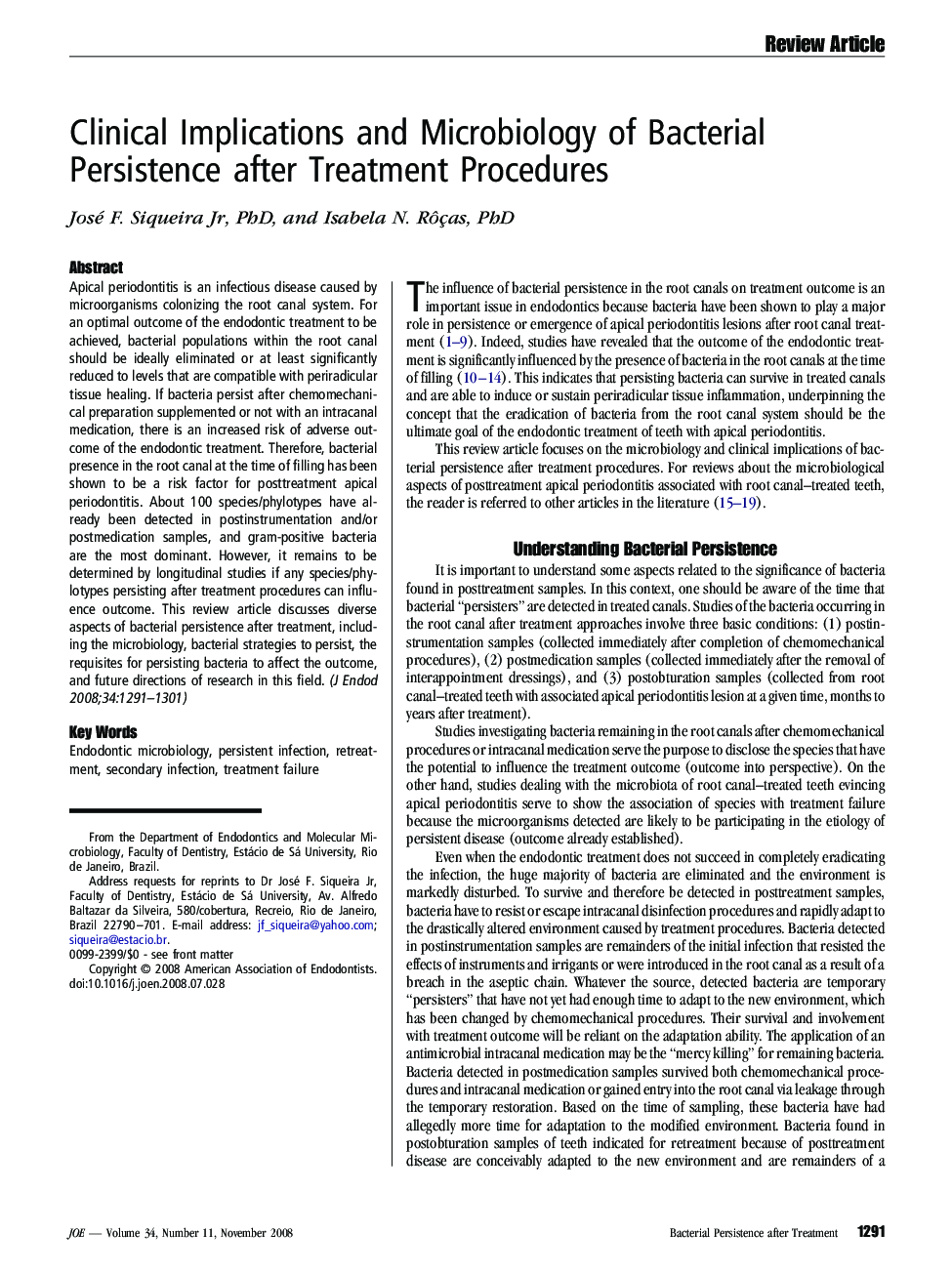| Article ID | Journal | Published Year | Pages | File Type |
|---|---|---|---|---|
| 3149585 | Journal of Endodontics | 2008 | 14 Pages |
Abstract
Apical periodontitis is an infectious disease caused by microorganisms colonizing the root canal system. For an optimal outcome of the endodontic treatment to be achieved, bacterial populations within the root canal should be ideally eliminated or at least significantly reduced to levels that are compatible with periradicular tissue healing. If bacteria persist after chemomechanical preparation supplemented or not with an intracanal medication, there is an increased risk of adverse outcome of the endodontic treatment. Therefore, bacterial presence in the root canal at the time of filling has been shown to be a risk factor for posttreatment apical periodontitis. About 100 species/phylotypes have already been detected in postinstrumentation and/or postmedication samples, and gram-positive bacteria are the most dominant. However, it remains to be determined by longitudinal studies if any species/phylotypes persisting after treatment procedures can influence outcome. This review article discusses diverse aspects of bacterial persistence after treatment, including the microbiology, bacterial strategies to persist, the requisites for persisting bacteria to affect the outcome, and future directions of research in this field.
Related Topics
Health Sciences
Medicine and Dentistry
Dentistry, Oral Surgery and Medicine
Authors
José F. PhD, Isabela N. PhD,
